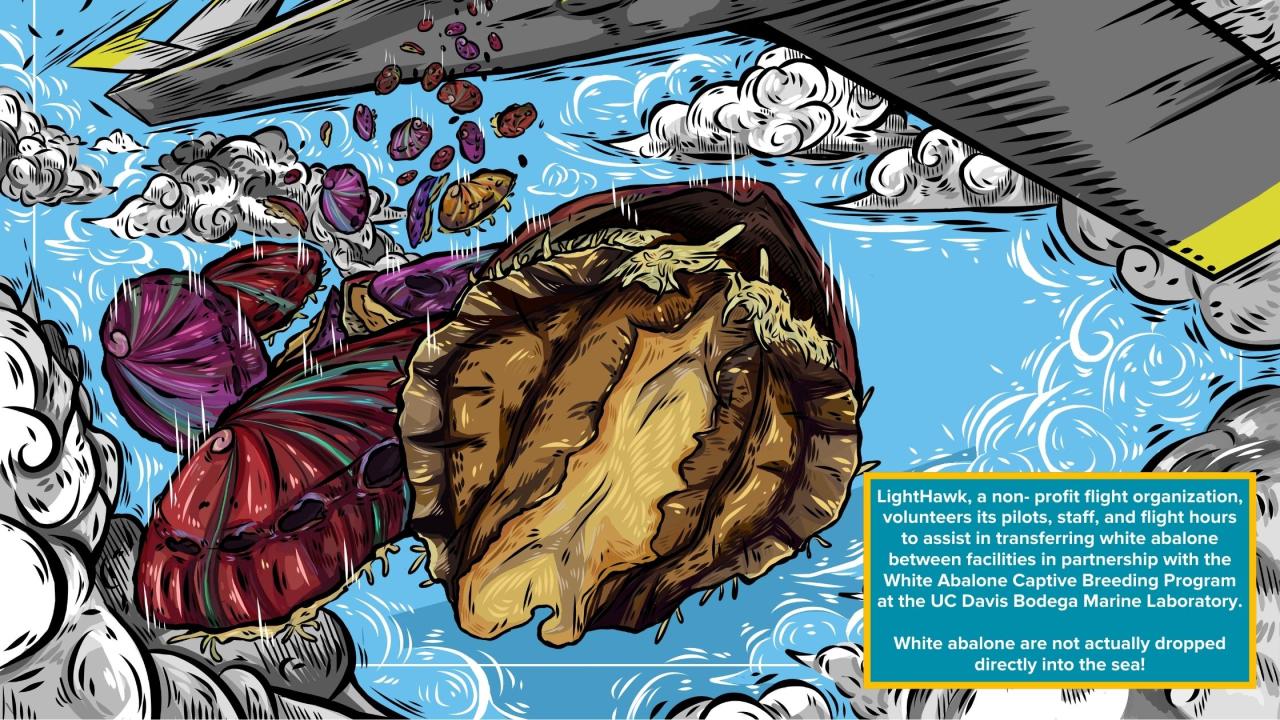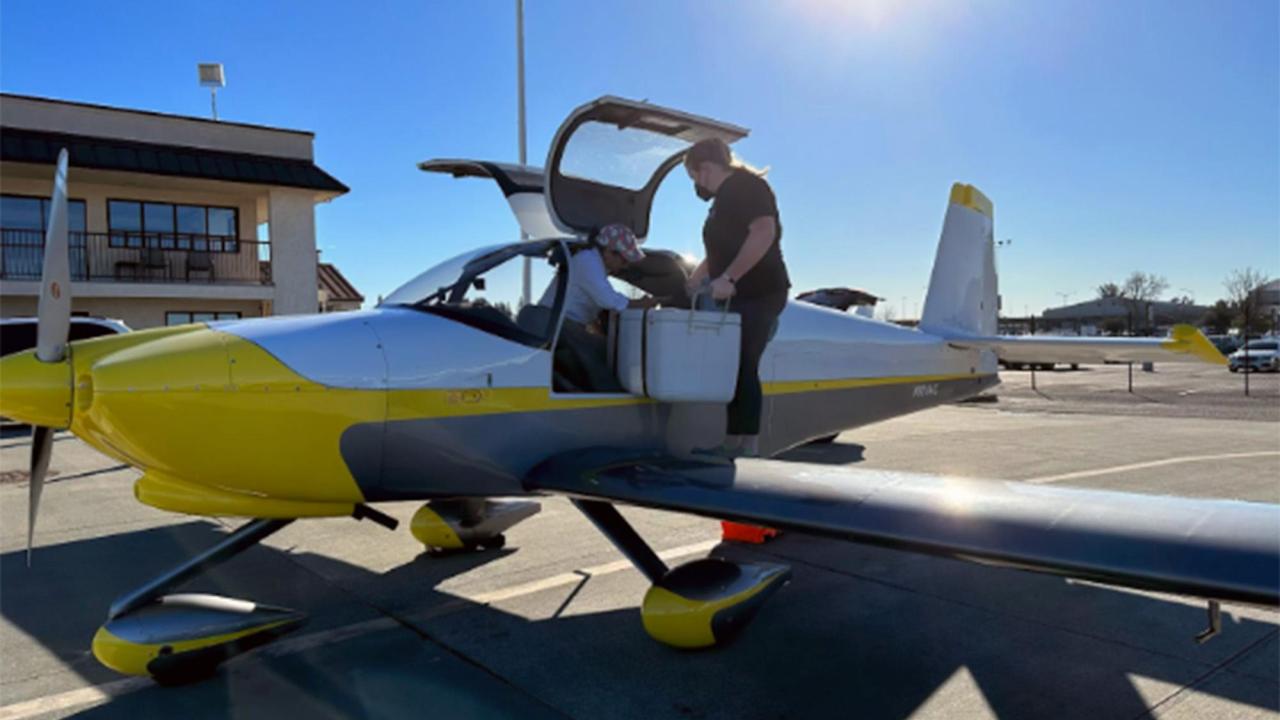
Making Space for White Abalone
Quick Summary
- Recent spawning events at BML have yielded over 6 million eggs, advancing white abalone restoration efforts. Researchers are now gathering more support to adapt conservation strategies for a dynamic ocean environment.
At the UC Davis Bodega Marine Laboratory (BML), white abalone conservation is one focus among the many marine invertebrates studied. This iconic marine snail has influenced cultural traditions, inspired regional cuisine, and moved generations of ocean lovers. But when overfishing pushed white abalone to the bring of extinction, humans and white abalone had to develop an entirely new relationship with each other. Alyssa Frederick, the Director of the White Abalone Captive Breeding Program at BML, provides an in-depth look into the intricate process and significant challenges involved in conserving this endangered marine snail.

The Spawning Process
The small conservation lab, about the size of a two-car garage, is filled with PVC pipes and troughs housing white abalone of various ages and sizes. Spawning involves adding hydrogen peroxide to a large plastic bucket to induce spawning behavior in broodstock (reproductive adults). Researchers carefully select which eggs and sperm to combine, minimizing inbreeding and diversifying the spawn. Precise handling is crucial as too much sperm or premature exposure to hydrogen peroxide can kill the embryos.
After spawning, fertilized eggs are transferred to hatching trays and monitored for proper shell development over seven days. Once the abalone start extending their foot, signaling readiness, they are placed in troughs.
Challenges and Innovations
One of the biggest challenges in white abalone conservation is consistent spawning. With only ten wild-origin animals in the entire program, nine of which are at BML, the genetic pool is limited. One prolific female, responsible for over 20 million eggs in 2019—well above the average annual maximum of 3-5 million eggs—faces a severe infestation of boring sponges on her shell. This infestation likely saps her energy, preventing her from producing another large spawn.

In the lab, several large blue plastic tubs house the wild adult white abalone. Their shells, covered with a protective mixture of coconut oil and wax, resemble overturned ceramic cereal bowls. This treatment smothers pest organisms that damage the shells. Maintaining healthy shells is crucial for abalone, as they invest significant energy into shell upkeep to protect themselves from predators. Some abalone have dedicated so much energy to shell maintenance that they neglect other biological needs and die. Even without predators in the lab, the abalone’s shells can still bear the scars of past threats, like boring sponges.
Reducing environmental stressors is a key aspect of keeping abalone in captivity. The wax and coconut oil treatment acts as a proactive measure to address any remaining predators or shell damage. To further improve conditions, the breeding program collaborates with the California Department of Fish and Wildlife’s Shellfish Health Lab. They are developing new treatments for emerging pest sponges and testing marine epoxy to strengthen damaged shells and smother pests.
Minimizing physical stress is essential, as stressed abalone will not reproduce and instead enter survival mode, focusing their energy on defense. Even weekly handling can stress the animals to the point of halting gonad production. Fortunately, ultrasound techniques now allow researchers to measure gonads without touching the snails, helping determine optimal spawning times. This, combined with adjustments in temperature, diet, and spawning season timing, aids in efficient gonad production.

This year, the white abalone program achieved its largest spawn in five years, producing 6.7 million eggs. Despite the abundance of juveniles, there are still fewer than 100 broodstock, which is insufficient to transfer fully developed abalone to another lab. This shortage highlights the need for expanded space at the lab to provide adequate room for newly spawned larvae to grow to a size suitable for ocean release.
However, the significant improvements in white abalone production over the last decade offer hope. The lab aims to eventually move more adult abalone to partner facilities, working with LightHawk, an organization that volunteers planes and pilots to transport embryos and young abalone to other facilities, and increasing the chances of successfully releasing more juveniles into the ocean.
The Importance of White Abalone
The white abalone population has diminished by over 99% due to overfishing. The few remaining snails in the wild face significant reproductive challenges, as the distances between them often prevent sperm from reaching the eggs, hindering effective reproduction.
The primary goal of the white abalone lab is to produce as many snails as possible. Dr. Frederick explains why conserving white abalone is crucial:
- Ecologically: white abalone are deep-water grazers that compete with other grazers like sea urchins. Unlike abalone, which graze on blades of drift kelp, urchins consume the holdfasts that anchor kelp to the ocean floor. Unchecked, urchins can decimate kelp forests, disrupting marine ecosystems.
- Culturally: white abalone have been significant since long before human history. Their current scarcity has rendered their use in cultural practices nearly impossible.
- Economically: white abalone once supported a major commercial fishery. Their decline has eliminated a valuable food source.
- Philosophically: there is also a moral obligation to save white abalone. Overfishing caused their near extinction, making them the first marine invertebrate listed as endangered. This has led to a collaborative effort among 12 facilities dedicated to their restoration. “I feel like if we can save this species, it’s a pretty good metaphor for the ways we can and should take care of one another. We are a part of their environment. We can't take ourselves out of it,” says Frederick.
Despite a tenfold increase in production, the program still strives to establish self-sustaining wild populations. Abalone raised in a safe, sterile environment face challenges when transitioning to the wild. Since fall 2019, the lab has released broodstock, but newly spawned abalone need years to grow to a size suitable for survival in harsh conditions. Moreover, today’s ocean environment is vastly different due to climate change, requiring researchers to future-proof their breeding efforts. The lab is continuously testing new experiments to prepare the latest spawn for eventual release.
The conservation program continues to make significant improvements each year. Since moving to Bodega Marine Lab in 2011, the program has made significant strides in producing and rearing juvenile white abalone. Frederick is hopeful:
“We hope that restoration research will soon be at a point where we are producing so many animals that we can breed a huge diversity of lineages, allowing them to have an even better chance of surviving in a changing sea.”

More to Explore:
Make a gift to the White Abalone program
Learn more about the White Abalone Lab
About the Author:
Elijah Valerjev, UC Davis class of 2024, is a Molecular and Medical Microbiology major with an Education and Professional Writing double minor. Interested in science communication, he enjoys the storytelling aspect of science writing, and is especially interested in connecting research topics to societal issues. Elijah works as board editor for the Aggie Transcript Undergraduate Research Journal, in addition to his work for the CMSI. In his spare time, he can be found enjoying his hobbies which include boxing, fiction writing and watching movies.
About the Illustrator:
Keila Alejos began her undergraduate studies at UC Davis in 2023. She aspires to combine both her passion for art and narrative illustrations with the insight of science or historical eras. Motivated by the opportunities at UC Davis, she is determined to learn and grow as both a scientist and artist with CMSI. Aside from the work being done for CMSI she also enjoys drawing her own series and ideas. On her days off, She often enjoys playing her bass, reading comic books, or her personal favorite, listening to loud music.
